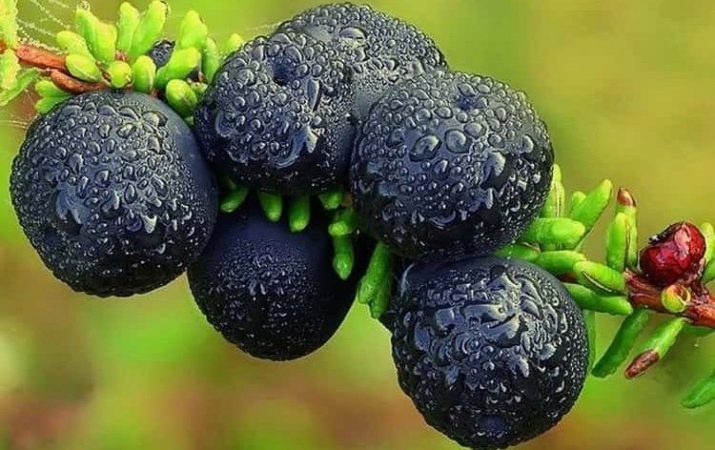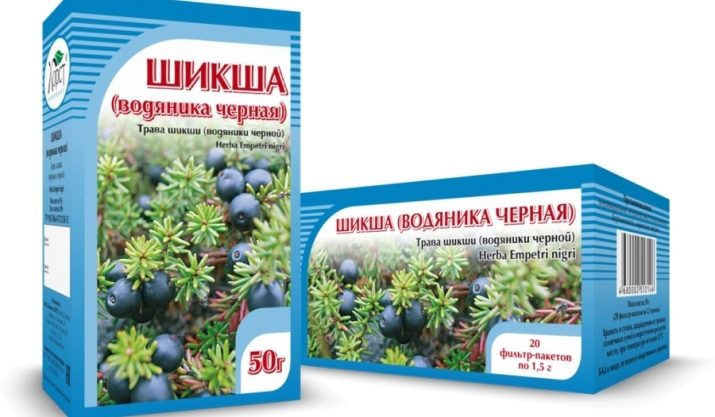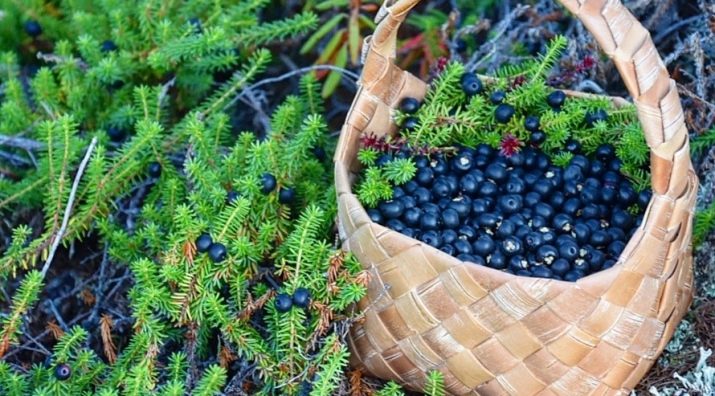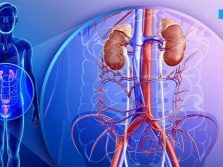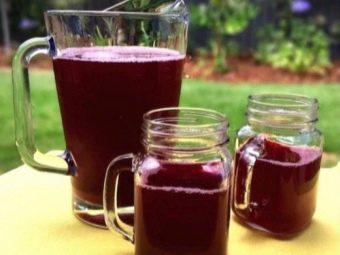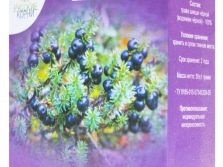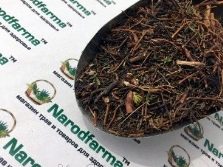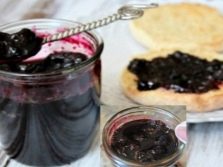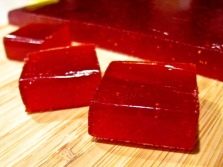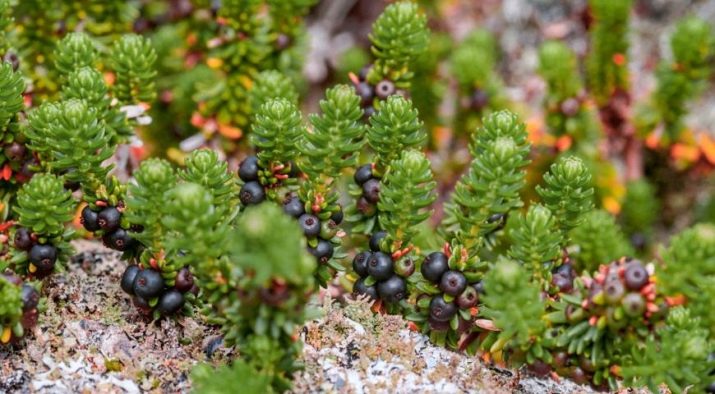Medicinal properties of shiksha and contraindications to its use
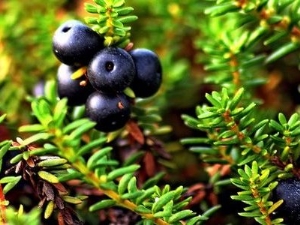
Shiksha has long been used by northern peoples, speaking as a source of vitamins and minerals, a medicine. Today it is becoming more widespread, which is not accidental. Berries, leaves and even young shoots of this plant effectively cope with the treatment of a dozen diseases.
Description
Shiksha is a small shrub, which is called evergreen. The latter is due to the fact that the branches of the plant are covered with small, similar to the needles, leaves. They keep on the branches up to 5 years. The plant is small (rarely reaches a height of more than 30 cm), but with long curving branches, the length of which sometimes reaches 100 cm. It is not surprising that shiksha is often called grass.
The shrub spreads along the ground, and in a certain period small black berries ripen on it. They are also called the crowberry for the diuretic effect that is found when eating fruits. The positive influence of the herb on the psycho-emotional, nervous system of a person is widely known, therefore there is another version of the name - psycho.
Externally, the berries are similar to blueberries (hence another name - the crowberry): they have all the same sizoe spraying. However, the berries in vodanika more dense. The fruits themselves are juicy, with a pleasant taste and small bones inside. The number of the latter varies from 8-10. Fruit ripening occurs at the end of summer, but on the branches they can persist until winter.
Translated from the Latin name of the plant means "on the stone", which indicates the conditions of growth of shiksha. This is a Siberian berry that prefers a cool climate. The plant is widespread in areas of tundra, rocky areas and even in some polar zones. If we talk about specific regions, this is the Altai Territory, the Kuriles, Kamchatka, Siberia, the Sayans. You can also meet a leader in Scandinavia, Mongolia, China, and the Far East.
Chemical composition
Before talking about the chemical composition, it is worth noting that not only berries, but also young branches and leaves have healing properties. Not surprisingly, all this is actively used to promote health and treat a number of diseases.
They are high in vitamin C, as well as quercetin, rutin and carotene. The highest concentration of vitamin C in the leaves of the grass. The taste of berries, sour and astringent, as well as their aroma are associated with the presence of organic acids, tannins and esters. In addition, there are resins, glycosides, sugars, in general, the plant is rich in carbohydrates. The dark color of the fruit is due to the presence of anthocyanins - natural dyes.
The leaves contain caffeic acid, as well as flavonoid and alkaloids. The berries are rich in glucose, sucrose, fructose, and contain wax. Among the trace elements in the composition of the plant should be noted manganese, selenium, potassium, calcium, magnesium, iron,
Benefit
Shiksha is widely used to strengthen and treat the nervous system. It can be recommended for stress, nervousness, anxiety. It will help level the manifestations of chronic fatigue syndrome, improve sleep. The headaches of psycho-emotional genesis, migraines - all of this traditional medicine also offers to treat with the help of clerks.
Moreover, the plant is effective in the treatment of more serious diseases of the central nervous system. These include depression, nervous exhaustion, psychodepressive states caused by the use of alcohol, drugs, and epileptic seizures. When epilepsy, if you believe reviews of close patients, the use of infusion and fresh berries helps to reduce the number of attacks. Finally, with regular use of a buzzard will help cope or reduce the manifestations of migraine, headache, pulsations in the temples.
By the way, thanks to the powerful antioxidant effect, shiksha removes toxins from the body, which allows it to be used to improve the state during alcoholic and narcotic intoxications.Daily use of a handful of berries helps to cope with the nicotine.
The same antioxidant effect provides binding of radionuclides in the body, so the berries should be included in the diet of people living in ecologically unfavorable regions. Possesses pond and radioprotective properties, which allows the use of drugs based on it in the treatment of radiation sickness.
The diuretic and anti-inflammatory properties of the plant allowed him to establish himself as an effective natural remedy for the treatment of diseases of the bladder and urinary system, as well as the pancreas. Acting as a diuretic, Broomstick also helps to cope with edema, removes excess moisture from the body, helps reduce blood pressure.
Due to choleretic, antibacterial and antioxidant effects, shiksha also copes with problems of the digestive organs. It has a therapeutic effect, relieves painful symptoms in gastritis, colitis, enteritis, and is effective in stopping diarrhea and dysentery. The plant extract has astringent properties, so it can often be found in the composition of drugs for the treatment of peptic ulcer and gastritis.
The presence of organic acids and anthocyanins allows siksha to be used to improve the functioning of the digestive organs. Fruits and leaves of the grass stimulate the production of hydrochloric acid, normalize the acid-base balance, help maintain the normal intestinal microflora due to antibacterial properties.
Particularly useful infusions and decoctions based on herbs for people suffering from indigestion due to low acidity of gastric juice.
Such infusions taken before meals, as well as berry juice, stimulate the appetite. Concentrated decoctions help get rid of worms.
Due to the high content of ascorbic acid in the composition, as well as other vitamins, edema demonstrates the properties of energy-stimulating tonerics. It is effective for strengthening the body during diseases, especially colds, as a preventive measure against acute respiratory infections, beriberi, scurvy. Berries useful to use with a weak immunity, after illness, operations.
Due to iron and magnesium in the composition of shiksha can be taken as a preventive and therapeutic agent in the fight against iron deficiency anemia. And flavonoids and ascorbic acid have a positive effect on the health of blood vessels, making them more elastic and reducing the fragility of the vascular walls. Such an effect on the walls and blood vessels in combination with the diuretic effect of the herb determines its ability to lower blood pressure.
Inside and outwardly, the infusion of herbs can be recommended to almost all office workers. Inside the tool tones, allows you to cope with fatigue, mental and emotional overstrain. Externally, it can be used for rinsing eyes to get rid of dry eye syndrome. Due to its restorative and strengthening properties, such a vitamin mixture can be instilled into the eyes during cataracts, glaucoma, and also during the recovery phase after eye injuries.
The plant has found application in cosmetology. Due to the antiseptic and drying properties, shiksha juice is used to treat acne, the effects of post-acne, and the removal of skin greasiness. Broth will help to cope with skin rashes with dermatitis, eliminate excessive dryness with psoriasis. In the presence of long-term healing wounds, you can make lotions on the basis of this broth.
But also decoctions and plant extracts are widely used to maintain healthy hair. They strengthen hair follicles, stimulate more active hair growth, restore damaged areas of hair.
Contraindications
Shiksha berries are contraindicated in case of individual intolerance of the plant. Care should be taken them to people with food allergies, the presence of anthocyanins in them can harm the body.
The impact of wild berries on pregnant and lactating women is not fully understood. However, it is believed that the effect of berries on the central nervous system is quite strong, so to avoid changes in the nervous system of the fetus and child, it is better to refrain from consuming black berries during pregnancy and during HB. Do not give fruits and infusions on the basis of plants for children and adolescents.
When drinking shiksha juice, one should remember about the high concentration of organic acids in it, so it should not be drunk in its pure form, but should be diluted with water.
Application Methods
Vodyanika found application in many branches of human activity. To a greater extent, it is used to treat certain diseases. And, although the official medicine is not in a hurry to prescribe medications on the basis of medicinal plants to patients, studies have shown that the plant is useful for nervous disorders, epileptic seizures.
Traditional medicine more actively uses the fruits, leaves and bark of the plant. So, you can brew tonic tea, bay 4 tablespoons of crushed leaves with 1 liter of water. The composition should be brought to a boil, then insist about 40 minutes. Take 200 ml in the evening. By the way, the same tea can be taken as a diuretic, in this case, a glass of drink is drunk in the morning - on an empty stomach or immediately after breakfast.
With neurosis and depression, overwork, it is more effective to take tincture of the spring plant. To do this, 100 g of dry raw materials (grass) is poured over 1 liter of red wine. The mixture is infused for 2 weeks, while it should be kept in a dark place and occasionally shaken. When ready to filter and take three times a day, 30 ml before meals, half an hour before it. The course of treatment is 7-10 days.
Concentrated decoction is usually prepared for external use. For example, for skincare with acne, oily shine, it is recommended to pour 2 tablespoons of dried leaves with two cups of hot water and hold for 10 minutes in a water bath. Cool and filter. The resulting infusion can also be treated boils and wash long-healing wounds.
As already mentioned, shiksha copes well with migraines, convulsions, and epileptic seizures. One of the recipes for remedies for these ailments - 2 tablespoons of dry grass pour 500 ml of boiling water, wrap the container with the composition with a towel and cool until completely cooled. Take 4 tablespoons 5-6 times a day before or after meals.
You can also brew 60 fresh or dried, frozen berries with a glass of boiling water and hold the mixture for half an hour in a water bath. Cool and let stand for several hours (can be left overnight). Take a drink on a tablespoon 7 times during the day.
To quickly remove toxins from the body, refresh and relieve headaches will help drink on the basis of dropsy. For 1 liter of whey you will need 4 tablespoons of dry shiksha grass. Bring to a boil, pour into a thermos and let stand for 2-3 hours. Take 1 glass every 5 hours. In view of the effect demonstrated by the composition, it is used to eliminate the effects of alcohol or drug intoxication.
In cosmetology, shiksha is used as a means to care for damaged hair and as a mask, skin lotion, mainly problem. It is noteworthy that decoctions, extracts and juice are used not only in the popular recipes of beauty, but also are part of the store shampoos.
The Siberian berry is also in demand in cookery - drinks are prepared from it (juices, compotes, fruit drinks), desserts (marmalade, jam, jam). Used to decorate baking, as well as a filling. Sour taste goes well with meat and poultry, so vyanyniki berries are often part of the sauces for these dishes.
You can use not the berries themselves, but only their juice of a rich blueberry color. They are painted ice cream, biscuits, dairy products.By the way, with the latest berries vanyanik combined very organically, so you can make cocktails based on kefir or ryazhenka, curd and floss.
The important point is that when combined with the “sour milk”, the fruit of the flooder gives a laxative effect. Juice from the berries can replace lemon fresh when cooking.
By the way, anthocyanin dye, which is a part of berries, is used in light industry. It is extracted from the composition of the plant in order to create red-green pigments based on it. The latter are used for dyeing fabrics, wool.
Evergreen shrub, blooming almost all summer, becomes the decoration of the garden. Particularly attractive looks low grass with elegant leaves, needles in the composition of the Alpine hills, multi-level flower beds.
In the wild, berries that often hang on bushes until December or January and become food for many birds and forest animals. By the way, another name for the floss is bear grass. Very much like toe to feast on these berries.
On the use of traditional medicine shikshi (floe) see the following video.

